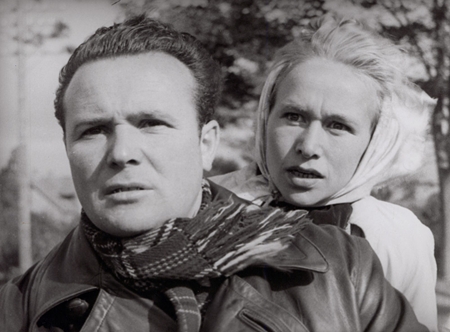From the Chicago Reader (July 2, 1999). — J.R.
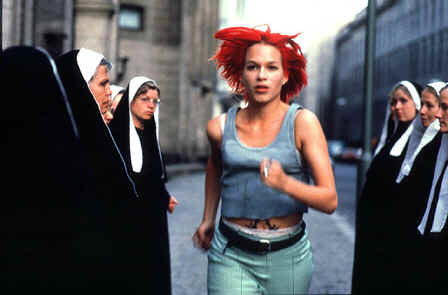
Run Lola Run
Rating ** Worth seeing
Directed and written by Tom Tykwer
With Franka Potente, Moritz Bleibtreu,
Herbert Knaup, Armin Rohde, and Joachim Krol.

A low-budget no-brainer, Run Lola Run is a lot more fun than Speed, a big-budget no-brainer from five years ago. It’s just as fast moving, the music is better, and though the characters are almost as hackneyed and predictable, the conceptual side has a lot more punch. If Run Lola Run had opened as widely as Speed and it too had been allowed to function as everyday mall fodder, its release could have been read as an indication that Americans were finally catching up with people in other countries when it comes to the pursuit of mindless pleasures. Instead it’s opening at the Music Box as an art movie.
Why try to sell an edgy youth thriller with nothing but kicks on its mind as an art movie? After all, it’s only a movie — a rationale that was trotted out for Speed more times than I care to remember. The dialogue of Run Lola Run is certainly simple and cursory, but it happens to be in subtitled German — which in business terms means that it has to be marketed as a film, not a movie. Read more
From the Chicago Reader (June 23, 2006). — J.R.
Three Times
**** (Masterpiece)
Directed by Hou Hsiao-hsien
Written by Chu T’ien-wen and Hou
With Chang Chen, Shu Qi, Di Mei, Liao Su-jen, and Mei Fang
For decades Chinese history has been suppressed in China, on the mainland and in Taiwan, whether the subject is occupation or revolution, communism or capitalism. Recovering that history has become an obsession for art film directors such as Hou Hsiao-hsien, Jia Zhang-ke, Stanley Kwan, Edward Yang, Tian Zhuangzhuang, Tsai Ming-liang, and Wong Kar-wai, whose films are set in both the past and the present.
Hou Hsiao-hsien’s Three Times (2005) is split into three episodes set in Taiwan, each running about 40 minutes and featuring Chang Chen and Shu Qi; all three reflect Hou’s overriding concern with the way one’s sense of freedom, desire, and life possibilities is inflected by the age one lives in. The episodes are also about romantic disconnection and failed communication, with the romantic tensions reflecting international ones.
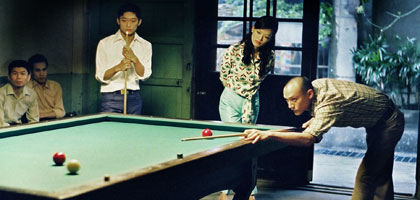
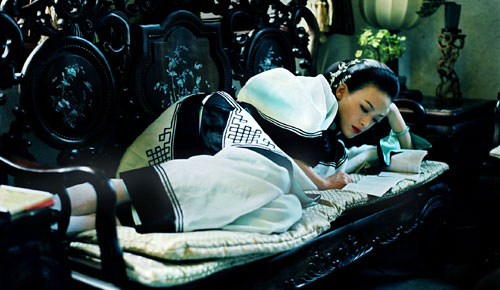

In “A Time for Love,” set in 1966 in Kaohsiung, Chen (Chang) receives his draft notice, then writes a love letter to May (Shu), who works at the snooker parlor where he hangs out. He discovers that she’s taken a job at another snooker parlor, and to the strains of “Smoke Gets in Your Eyes” and “Rain and Tears” he heads off to find her before reporting for duty. Read more
From the Chicago Reader (May 1, 1997). — J.R.
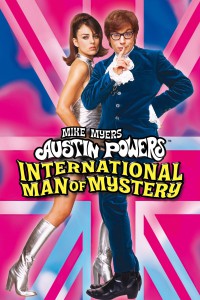
After 30 years of cryogenic preservation, the title hero (a spin-off of James Bond and his clones) and his archenemy Dr. Evil — both played by writer and coproducer Mike Myers (Wayne’s World) — emerge in the present to match wits all over again. What’s really fun about this silly but spirited comedy isn’t just the ribbing of swinging London fashion and social attitudes but the use of the compulsive zooms and split-screen mosaics of commercial movies of the 60s (some of the funniest gags derive from camera placement). There’s a bit of fudging when it comes to the romantic interest: sidekick Elizabeth Hurley initially blanches at Austin Powers’s advances but succumbs as soon as he treats her to a night on the town in Las Vegas, complete with champagne and Burt Bacharach. But 60s (and 50s) icons like Robert Wagner and Michael York (playing someone called Basil Exposition) make this exercise in historical relativity even funnier. Jay Roach directed with just the right amount of period tackiness. With Mimi Rogers, Seth Green, and Fabiana Udenio (as Alotta Fagina). (JR)
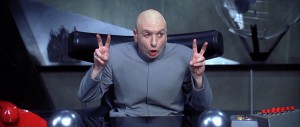 Read more
Read more
From Monthly Film Bulletin, September 1976, Vol. 43, No. 512. — J.R.

De Naede Faergen (They Caught the Ferry)
Denmark, 1948
Director: Carl Th. Dreyer
Dist–Guild Sound & Vision. p.c–Ministeriernes Filmudvalg. sc–Carl Th. Dreyer. Derived from a work by Johannes V. Jensen. ph–Jørgen Roos. ed–Carl Th. Dreyer. sd–Jorgen Roos. l.p–(not credited). 408 ft. 11 mins. (16 mm.).

Behind the credits, accompanied by the ominous sound of three beats on a kettledrum, a ferry arrives at the Assens-Aarøsund landing. After some reverse-angle cuts between ferry and landing, a motorcyclist on board asks the captain about the next departure of the ferry on the other side of the island. ToId that it leaves in forty-five minutes but that he’ll never make it — the other ferry being seventy-five kilometres away — the man replies, “I must get it” and, with a female companion clinging to his waist, drives off the boat behind a line of other cyclists.
He quickly accelerates from 40 to 80 km. per hour, and his race down a country road is illustrated by moving shots which alternate his viewpoint (passing trees, close-ups of speedometer) with ‘objective’ angles (shots behind or ahead of his bike, close-ups of wheels). After stopping at a petrol station, where he urges the female attendant to hurry and she replies that he’lI have to drive fast to make the ferry. Read more









